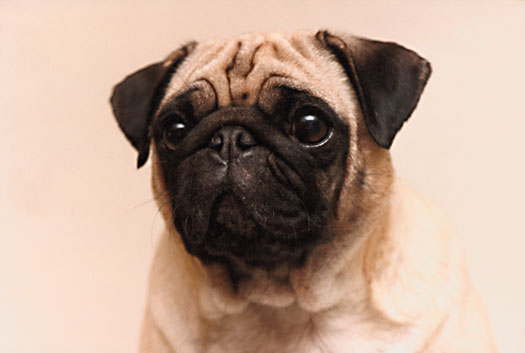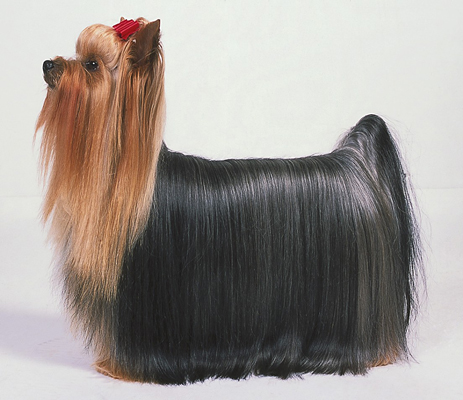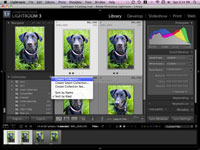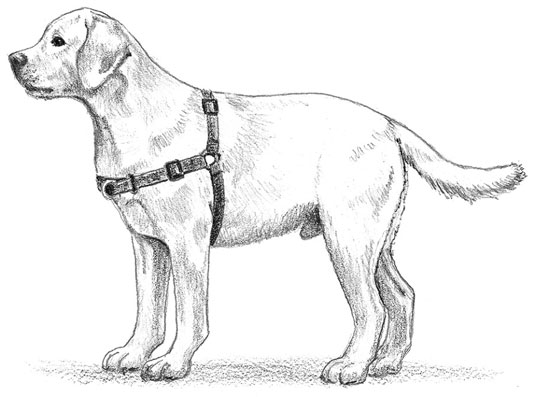Riconoscere le comuni lesioni da iguana
Un
Gli husky sono cani polivalenti con interessi ad ampio raggio. Ecco una panoramica di alcune attività canine che potresti provare con piacere. Se vuoi saperne di più, controlla con il tuo club per cani, il club di razza o l'American Kennel Association. Tutti sono benvenuti!
Questo elenco non esaurisce affatto il tipo di cose che puoi fare con il tuo Siberian Husky . L'avventura è limitata solo alla tua immaginazione.
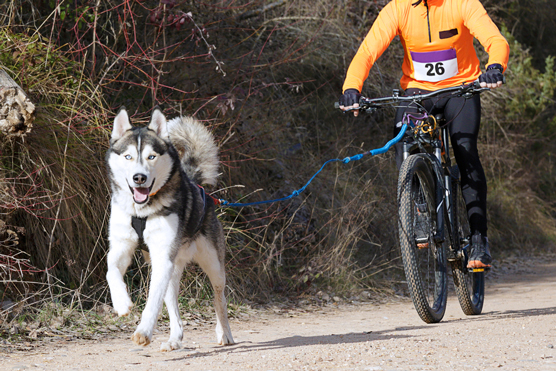
© Raquel Pedrosa / Shutterstock.com
L'agilità canina è uno degli sport per cani in più rapida crescita, che fornisce un eccellente esercizio sia per te che per il tuo cane. In sostanza, l'agilità è una corsa a tempo su 14-16 ostacoli (a livello di principianti) che includono salti, tunnel, rampe, altalene, tavoli di pausa e pali intrecciati. Velocità e precisione sono entrambe importanti.
Il tuo cane si affida ai tuoi segnali e al linguaggio del corpo per guidarlo durante il corso. L'agilità è aperta a tutte le razze e taglie e l'agile, veloce ed energico siberiano è un ottimo candidato (dopo aver convinto il suo spirito indipendente a seguire le tue indicazioni piuttosto che prendere le sue decisioni). I siberiani possono eccellere in questo sport, specialmente se usi dolcetti e incoraggiamenti positivi, perché hanno la taglia e il tipo di corpo perfetti per competere. Devi solo convincerlo che è divertente. ( Suggerimento: guarda alcuni video di YouTube se non mi credi.) A causa della propensione del siberiano a correre dove vuole, devi prima fare il lavoro di obbedienza con il tuo siberiano.
Poiché i siberiani tendono ad avere problemi di concentrazione, non tentare mai l'agilità senza il piombo a meno che l'area non sia completamente recintata, anche se ha seguito un corso di obbedienza.
Inizia l'agilità frequentando un corso di agilità in un club per cani vicino a te. Il tuo siberiano dovrebbe avere un anno e completamente sviluppato prima di iniziare. (Le competizioni ufficiali AKC sono aperte solo ai cani di età pari o superiore a 15 mesi.) Consiglio vivamente al tuo cane di sottoporsi a un controllo veterinario approfondito prima di iniziare. Anche lui deve essere in regola con le vaccinazioni.
Molti di questi club hanno già l'attrezzatura adeguata. Se il tuo siberiano prende l'agilità, puoi acquistare i tuoi ostacoli (presumendo ovviamente che tu abbia spazio nel tuo cortile). Dovrai dedicare circa 20 minuti ogni giorno alla pratica, perché i cervelli siberiani sono troppo pieni di piani intriganti per ricordare semplici comandi come "Pausa!" Ammettilo: non è nella loro natura fermarsi.
Se appartieni a un club per cani o a un parco per cani con attrezzature disponibili pubblicamente, in realtà non hai bisogno di nulla. Tuttavia, se lo desideri, puoi iniziare a costruire i tuoi ostacoli e le tue passeggiate oppure puoi acquistarli facilmente online e gradualmente non è necessario acquistare tutto in una volta.
Pronto a guidare? Prendi la tua mountain bike e prendi il tuo Husky (o Husky)! Bikejoring dà la sensazione di andare in slittino senza la neve e consente al tuo Husky di realizzare i suoi talenti naturali di trainatore. In questo sport cavalchi per terra e lasci che i cani facciano il lavoro, anche se puoi aiutare quando vuoi pedalando. Puoi trovare alcune competizioni negli Stati Uniti per questo sport (anche se l'Europa ne ha di più) e le gare generalmente sono più orientate al divertimento che alla vittoria. Tieni presente che tu e il tuo cane dovete essere in ottime condizioni!
Il tuo cane deve essere in grado di seguire i segnali verbali, quindi un forte background di obbedienza è un must. I comandi comuni sono:
Usando i vecchi comandi, accidenti! ("gira a destra") e haw! ("gira a sinistra"), può essere divertente per i cani agili di livello superiore.
Devi prima allenare il tuo Husky mentre sei prima a piedi e poi passare a una bicicletta (muovendosi molto lentamente). Non fare questo sport sul cemento perché ucciderà i piedi del tuo Husky. Anche lo sporco duro può essere un problema. Il terreno sabbioso o soffice è il migliore.
Assicurati di portare il tuo kit di pronto soccorso e molta acqua per questo sport. Controlla costantemente i piedi del tuo Husky quando ti alleni. Se pratichi questo sport con passione, allora il tuo Husky dovrebbe indossare stivaletti.
Oltre a un cane o due e una bicicletta, è necessaria la seguente attrezzatura:
Un altro sport simile al bikejoring è il footbiking o lo scottering .
Canicross, noto anche come CaniX, è una corsa seria con il tuo cane, ma senza tenere il guinzaglio. Sì, gli husky non sono affidabili fuori piombo. Tuttavia, il delizioso intoppo è che non v'è un vantaggio - non è solo attaccato alla tua mano. È attaccato a una cintura e permette al cane di tirarti, uno sport perfetto per gli husky.
Canicross isn’t a sport for the weak of heart or limb. However, it’s been estimated that dedicated joggers can shave off 30 seconds a mile because you’re dog-powered! Your Husky is ready for Canicross between 12 and 18 months of age; you can start light training before then.
Although bikejoring and skijoring are ultimately dog races, Canicross is a race for human beings, even though the dog gets a real workout, especially when he’s pulling you uphill.
You need the following equipment to race:
Use the same commands as you do for bikejoring (see the previous section). As you get comfortable with running, you can figure out how to use your body weight, leaning back to slow your dog down.
Carting, also referred to as drafting, is an activity in which your Husky (or Huskies) pull two- or four-wheeled vehicles. It’s a summertime version of mushing/sledding, and as the name suggests, it’s done with a cart instead of sled.
Carting can be done competitively or just for fun. Competitions have separate events for dogs pulling people and those pulling equipment. Each event uses a different style of cart. In carting you can use voice commands to control your Husky, or, if children are in the cart, you can lead him. Commands in carting are the same as for bikejoring and canicross, with special emphasis on “stop.” If there is one thing any dog needs to learn, it’s to stop doing whatever he’s doing when told.
A two-wheeled vehicle is technically called a cart or a sulky. The four-wheeled type is a wagon. A wagon can carry more weight, but perhaps its greatest advantage is that it supports itself and isn’t bearing down on the dog the way a cart is. Carts must be balanced extremely carefully to avoid injuring your Husky.
In carting competitions (both this type and the type in the next section), dogs have to pass ten tests:
Some competitions include a freight haul of half a mile or so to test endurance.
You aren’t limited to one Husky in carting — two Huskies side by side make excellent partners! Just make sure your Husky is old enough. No dog under 18 months should be allowed to pull anything heavier than himself.
Dogs can pull an amazing amount of weight with ease, often three or four times their own weight. All breeds of dog, large and small, are able to enjoy this sport, but Huskies are especially suitable.
As with every dog sport, obedience training is a must. An untrained dog running amuck with a cart attached isn’t something to be taken lightly.
Although carting can be great fun, it has a serious side. Service dogs able to cart can be of great assistance to their owners, carrying heavy items you can’t carry, like bags of mulch.
Because Huskies are among the world’s most beautiful dogs, who wouldn’t want to show them off in conformation (otherwise known as a dog show)? Yes, a dog show is a beauty pageant (a combination of Miss America and Survivor) for dogs, in which a judge compares your dog to the ideal (as described in the breed standard).
Your Husky competes against other Huskies. If he is chosen Best of Breed, then he’ll go on to compete and against other dogs in the Working Group for more honors. If he wins that competition, he is up for the all-important Best in Show title, competing against other group winners. It’s hilarious watching a Yorkie competing against a Great Dane, but that’s the way it goes, and as often as not, the little dog wins.
Dogs entering conformation shows must be registered with the organization sponsoring the event, normally the American Kennel Club or the United Kennel Club. In the United Kingdom, it’s simply The Kennel Club, as if there were no other.
If the only experience you have of conformation is watching the Westminster dog show on TV, you may be sucked into the glitz and glamor of the whole thing. Most dog shows, however, are much lower-key, family affairs. To get started, all you need is the right dog. And that’s where things can be dicey. Conformation is a rather unforgiving affair: an ear that is incorrectly set, a kink in the tail, or an improper bite can doom your precious Siberian to the also-rans of dogdom. Conformation is also a very subjective affair. Many dog shows occur in weekend clusters with a different judge each day. I’ve seen a dog who placed first on one day in front of one judge and end up without a ribbon in front of another judge on subsequent days against the same competition, all of whom performed in pretty much the same way.
In any case, a good breeder should be honest with you about a dog’s show prospects. Not every puppy in a litter is of show quality, which may not be apparent for a few months. If you want to show, talk to the breeder before you get a puppy. She’ll be happy to work with you in picking the right dog and, in all probability, be a coach and mentor to you. A responsible breeder won’t sell you a non-show quality dog for showing because doing so would reflect badly on her.
One technicality that many pet owners object to: Conformation dogs aren’t usually allowed to be shown if they’re neutered/spayed because the original purpose of a dog show was to promote breeding stock. Although many have complained about this rule, it still stands. (All other events, such as agility and obedience, are open to neutered/spayed dogs.)
The best way to get started in this sport is to work with your breeder and your local kennel club, which may offer handling classes. Some people hire a professional handler to show their dogs for them, but there’s no reason to miss out on the fun. You can learn how to do it yourself. It’s not particle physics. (It’s a lot easier than agility, where nearly everyone handles their own dog.)
Experienced dog handlers know which judges tend to like which type of dog and choose their shows accordingly.
This sport started out as dock diving, but apparently diving dog sounds better. In any case, you still need a dock or a good approximation of one. (It should ideally be a pretty long dock, about 40 feet.) The North America Diving Dogs (NADD) organization offers events that may be held in conjunction with AKC dog shows, and the AKC recognizes NADD titles.
You stand at the edge of a dock and throw your Husky’s favorite toy as far as you can into the water. On your command, he races to the end of the dock, flings himself headlong into the water, and fetches the toy. (Don’t worry. You’re allowed to have someone hold your Husky for you.) The object is for him to leap as far as he can. Beginner dogs often jump just a couple of feet. The more experienced ones go 30 feet or more. (Dogs can compete for height or distance; the former is called air retrieve, and the dog attempts to knock the bumper, which is suspended over head into the water.)
All you need is a towel and a toy, although you’re allowed to outfit your dog with a life vest as well. Your dog should be at least 6 months old to compete.
AKC Obedience is a sport designed to showcase your Husky’s ability to follow specific commands and routines. The goal is to score 200 for a perfect score, but a score of 170 is considered qualifying. Obedience has many levels, but challenges that the dog must meet include the following:
Higher levels ask the dog to do broad jumps and high jumps, retrieve on command, use scent discrimination to find his handler’s item among a bunch of others, and other tricky maneuvers.
Obedience is a sport that pays off well beyond the show ring. Don’t confuse this competition with the ordinary obedience you should be treating your Husky, although it’s related. Obedience is a judged AKC event, developed in the 1930s. Unlike other dog sports that encourage your dog to run around like a crazy person, jumping into water and dragging you along by leash, obedience teaches your dog to sit and lie down on command and do all sorts of other lovely things, including jumping and retrieving.
Did I just hear you gulp? I don’t blame you. Huskies need a lot of work in the retrieving department. In this event, the judge gives orders for each element. All dogs are allowed to compete in obedience. The one caveat is that mixed breeds must be neutered first.
Dogs must be 6 months of age to compete. (AKC rules specify that blind dogs can’t compete.) Obedience tests are available at many levels, from Novice (beginner) to Utility (expert).
Huskies are independent thinkers and tend to resist being told what to do. That doesn’t mean you can’t excel in obedience with your Husky. It just may take more patience than you would need if you had, say, a Golden Retriever (they walk off with all the honors in this sport).
Sometimes called Rally Obedience or simply Rally-O, this competition used to be considered a kind of beginner’s obedience, but it’s now recognized as a sport on its own merit. Rally has no set course, unlike obedience, in which you follow a set pattern. In rally, you don’t know what to expect. The course generally isn’t known until about half an hour before the event.
The rally course is marked with between 10 and 20 signs indicating what you should do at each sign. Examples include the following:
Teaching your dog to read the signs for himself would be a tremendous help and save you the trouble. The goal is to score 100 points.
At lower levels, you’re allowed to have your dog on a leash, which helps a lot with Huskies. Higher levels of rally include jumps, including so-called directed jumps in which the Husky is supposed to go off and jump where you tell him. Huskies have no problem in jumping. It’s jumping where you want him to jump that presents the problem.
Another major difference between them is that in rally you’re allowed to talk to and encourage (but not touch) your dog. In obedience you aren’t allowed to talk to him. In rally you also get a redo; in regular obedience you don’t. Most people think that rally judges are easier than obedience judges in terms of strictness about heel position and so forth. (I’ve actually heard obedience people claim that rally “ruins heeling.” However, that’s really an individual matter.)
Skijoring is a Norwegian word that mean “ski-driving.” It’s a cross between sledding and cross-country skiing. You can skijor with horses, motorized vehicles, or in this case, your Siberian. At one time people commonly used this method of getting about the slopes; nowadays it’s done for recreation and competition.
Races vary in length from the short-distance (3 to 10 miles) and long-distance (20 and 50 miles) skijoring events for you to sample. If you’re really ambitious, you could try the 64 miles (100 kilometer) Alaskan Iditasport. Siberians, as you would expect, excel at this sport and compete at both sprint and long-distance forms.
Although some people claim you don’t need to be an expert skier to participate in this sport, don’t be fooled. You do. If you can ski, however, this sport is a lot easier to master than dog sledding.
The number of dogs one needs to skijor is variable — most commonly it’s one to three. Note: No leashes are involved. You need to guide the dog by voice and gesture. The commands and harnessing equipment are the same as for bikejoring. The correct skis for this sport are ultra-light skate-skis. No metal-tipped skis should be used because they’re too dangerous around your dog.
Possibly the trickiest thing to teach the friendly Husky is the “On by!” command. It’s important that your Husky zips right on by another team without slowing down. As with every other sport, have your dog checked by a veterinarian before embarking on this hobby. And start slowly, getting your dog accustomed to each element before throwing it all together.
A fun fact: In 1928, equine (horse) skijoring made an appearance at the Winter Olympics in St. Moritz, Switzerland. The experiment, sadly, wasn’t repeated.
One of the most satisfying activities you and your Husky can do together is providing therapy. Unlike many other activities, a therapy dog doesn’t need to be in tiptop physical shape, and neither do you. Older dogs and even dogs with disabilities can contribute to the health and happiness of others.
Molte organizzazioni offrono addestramento e certificazione per cani da terapia e alcuni ospedali richiedono questa certificazione prima che tu possa visitare. Decine di grandi organizzazioni certificheranno il tuo cane; l'AKC fornisce un elenco di organizzazioni da loro approvate . Verificare con le istituzioni locali ciò di cui hanno bisogno.
Il ruolo di un cane da terapia è vario. In alcuni casi, il suo lavoro è semplicemente quello di stare lì ed essere accarezzato e amato. Altri cani da terapia assumono un ruolo più attivo. Possono aiutare i pazienti a fare esercizio e migliorare la mobilità articolare. Incoraggiano le persone ritirate, depresse e sole a interagire in modo positivo.
Per eccellere in questa attività, il tuo cane deve semplicemente essere calmo, ben educato, ben curato e gentilmente interessato alle persone, il che rende la terapia perfetta per i cani anziani e stabili. In effetti, la maggior parte delle organizzazioni non concede la certificazione a un cane di età inferiore a un anno. Anche se non hanno bisogno di fare trucchi, anche se questo è sempre un vantaggio, devono essere obbedienti ai comandi. I cani terapeutici possono essere i benvenuti in ospedali, case di cura e altri luoghi in cui le persone sfidate possono godere della loro bellezza unica e della loro personalità affascinante.
Anche se l'AKC stesso non offre addestramento e certificazione per cani da terapia, concede al tuo cane da terapia un titolo AKC ufficiale, a seconda di quante visite ha completato il tuo cane da terapia certificato. Il titolo più alto è AKC Therapy Dog Distinguished (THDD), che richiede 400 visite.
Un cane da terapia non è un cane di servizio. Un cane da assistenza è un cane specializzato e altamente addestrato che fornisce un servizio vitale per un proprietario disabile e in tale occupazione ha privilegi speciali. Alcune persone abusano del sistema e fingono che il loro amato animale domestico sia un vero cane da assistenza. Nessuno è ingannato.
Hai mai pensato di far diventare il tuo Husky un cane da ricerca e soccorso? Il tuo Husky sta sempre annusando e prestando minuziosa attenzione a ogni filo d'erba e roccia sul sentiero? In tal caso, considera lo sport del monitoraggio. Potrebbe essere l'inizio di un cane eroe al lavoro. Ogni cane con un naso ha il potenziale per eccellere. La bellezza del tracciamento, almeno dal punto di vista del tuo Husky, è che è lui al comando. Non più stupido seguire le istruzioni e obbedire ai comandi. No, nel monitoraggio sono solo l'articolo, il vento e il tuo cane. Sei semplicemente un ripensamento, arrancando piuttosto impotente dietro il tuo cane dall'odore pungente. Gli husky amano guidare e in questo sport è lui che decide dove stai andando.
Il tuo cane può guadagnare la sua prima credenziale Tracking Dog (TD) seguendo una pista precedentemente tracciata lunga da 440 a 500 iarde con da tre a cinque cambi di direzione. Alla fine della traccia c'è l' articolo, di solito un guanto ben imbevuto di profumo umano.
La pista viene posata da 30 minuti a due ore prima dell'evento da un tracciatore umano. Il cane, al guinzaglio di 40 piedi, segue la pista, mentre tu lo segui offrendo incoraggiamento. I cani più avanzati guadagnano quanto segue:
La sfida principale che il tuo Husky dovrà affrontare è che deve mettere da parte la sua istintiva preda. Se un coniglio attraversa la pista, deve ignorare questo profumo invitante e rimanere inesorabilmente sulla sua traccia originale. (Ecco perché i Bloodhound, allevati esclusivamente per la caccia all'uomo, eccellono nel monitoraggio.)
L'AKC è abbastanza indulgente nei suoi requisiti di tracciamento. Il tuo Husky può allontanarsi un po' dalla pista finché sembra funzionare. Altre organizzazioni richiedono che il tuo cane segua con precisione. Il monitoraggio è davvero più una prova della concentrazione del tuo Husky che della sua reale capacità di fiutare. Potrebbe improvvisamente annoiarsi e scappare a caccia di scoiattoli. L'unico modo per saperlo è provarlo.
Se tu e il tuo Husky siete incredibilmente devoti, puoi vincere l'ambito titolo Versatile Companion Dog (VCD): certificato in Agility, Obedience e Tracking.
Un
Scopri tutte le informazioni sul Carlino ideale, comprendendo le scelte da fare e le caratteristiche fisiche fondamentali, per portare a casa il cane perfetto per te.
Scopri i segreti della comunicazione delle iguane: postura, giogaia, movimenti e linguaggio corporeo. Guida completa per comprendere ogni sfumatura del loro comportamento.
Scopri le differenze chiave tra Rottweiler maschi e femmine. Confronto dettagliato su dimensioni, temperamento, addestramento e cure per aiutarti a scegliere il compagno perfetto.
Lo Yorkshire Terrier appartiene allAKC Toy Group per le sue dimensioni, ma ha il cuore e gli istinti di un vero Terrier. Scopri lo standard di razza e i dettagli indispensabili per i proprietari di Yorkie.
Scopri cosa fare se il tuo cane rimane impigliato con gli aculei di porcospino. Le informazioni utili per il benessere del tuo animale.
Scopri i problemi di salute comuni ai Jack Russell Terrier, tra cui cardiomiopatia e malattia di Von Willebrand. È fondamentale conoscere i sintomi e consultare un veterinario.
È ora di iniziare a organizzare tutte le foto del tuo cane! Lightroom ha alcuni strumenti organizzativi davvero fantastici, il cui punto cruciale è una piccola funzionalità chiamata Raccolte. Vedete, quando importi le foto in Lightroom, il software le aggiunge automaticamente al pannello Cartelle, attraverso il quale puoi navigare, proprio come navighi verso uno specifico […]
Man mano che il cucciolo matura e iniziano le lezioni, potresti voler passare da un collare o un'imbracatura di nylon a un collare di condizionamento o di addestramento, che scoraggia l'affondo, la trazione e la reattività generale e a un guinzaglio più robusto. Usa il rinforzo positivo per incoraggiare la concentrazione del tuo cucciolo. I collari condizionanti incoraggiano il tuo cucciolo a camminare vicino a te attraverso […]
A seconda delle attività esterne del tuo Jack Russell Terrier, dovresti lavarlo solo ogni mese o meno. Naturalmente, se il tuo terrier è fuori a rotolare nella terra ogni giorno, potresti doverlo bagnare un po' più frequentemente. I bagni brevi e più frequenti sono migliori di quelli lunghi e poco frequenti. Ottenere […]
